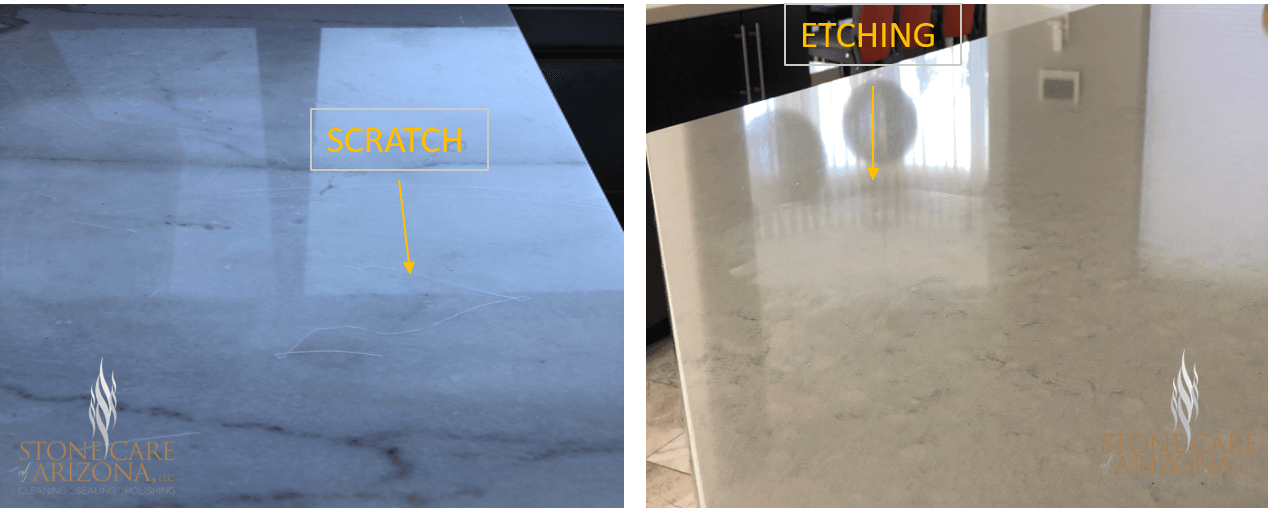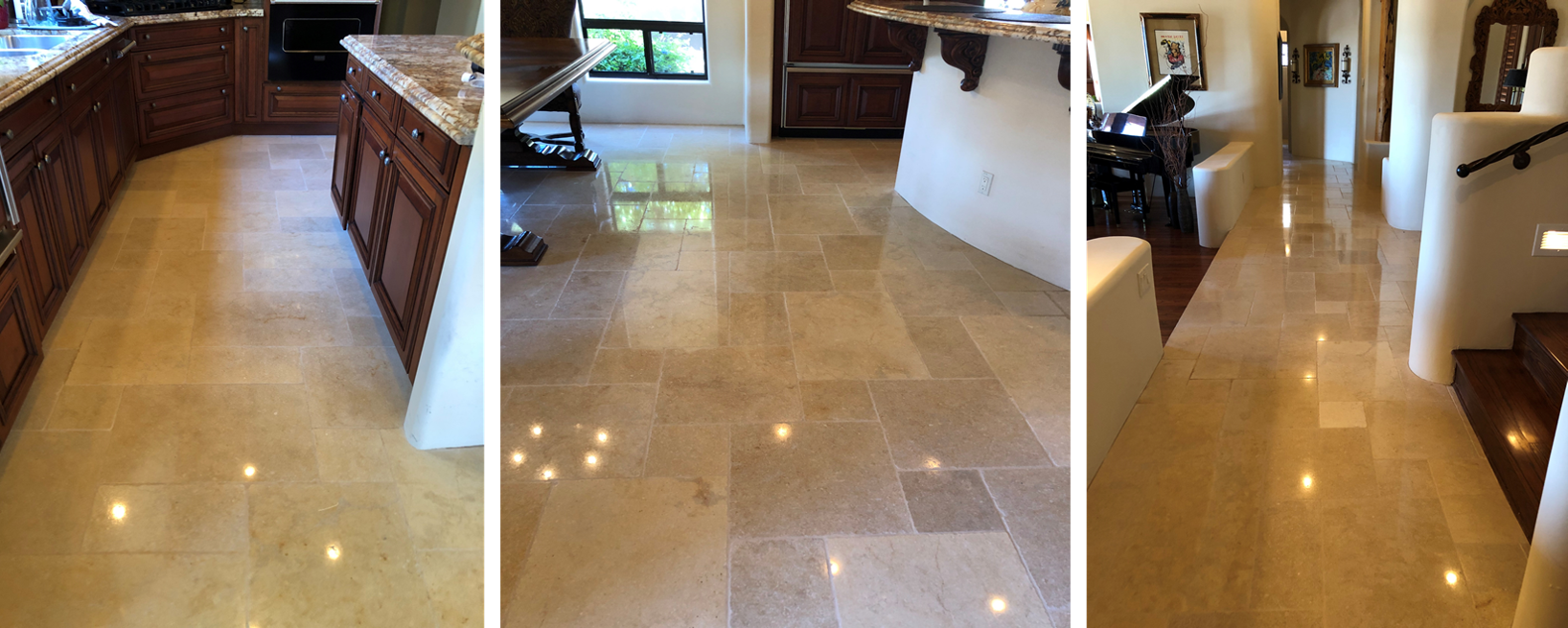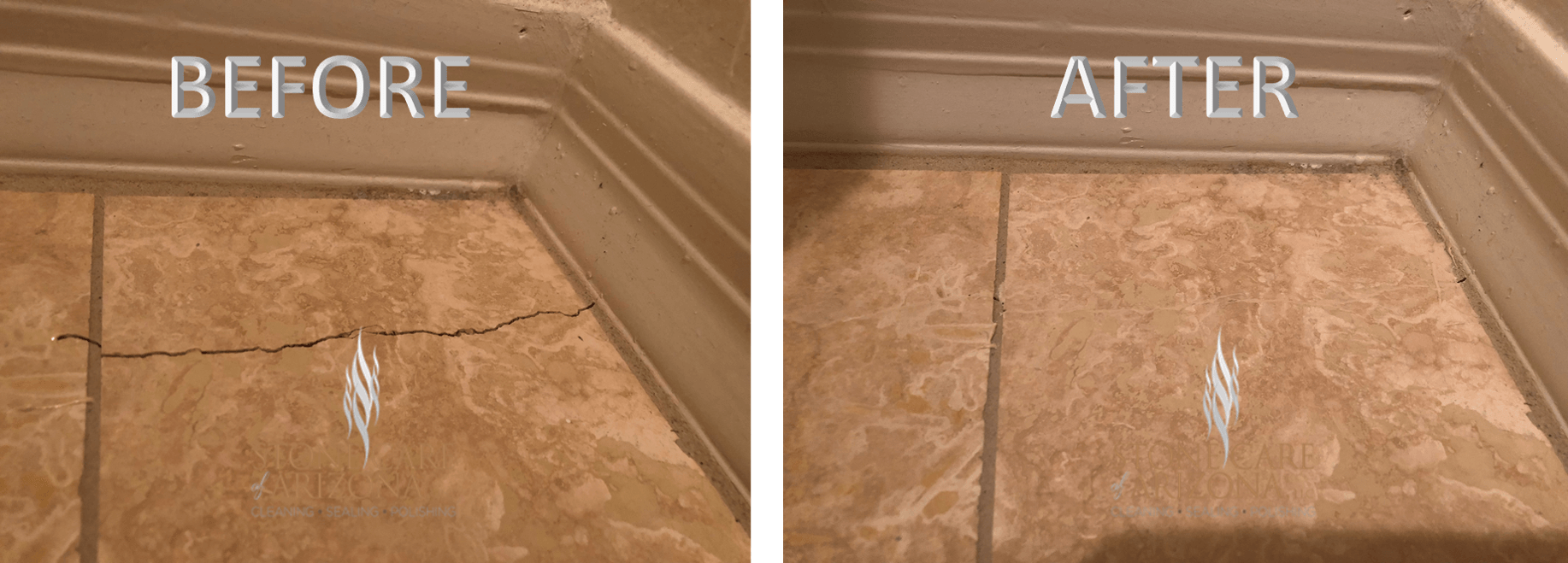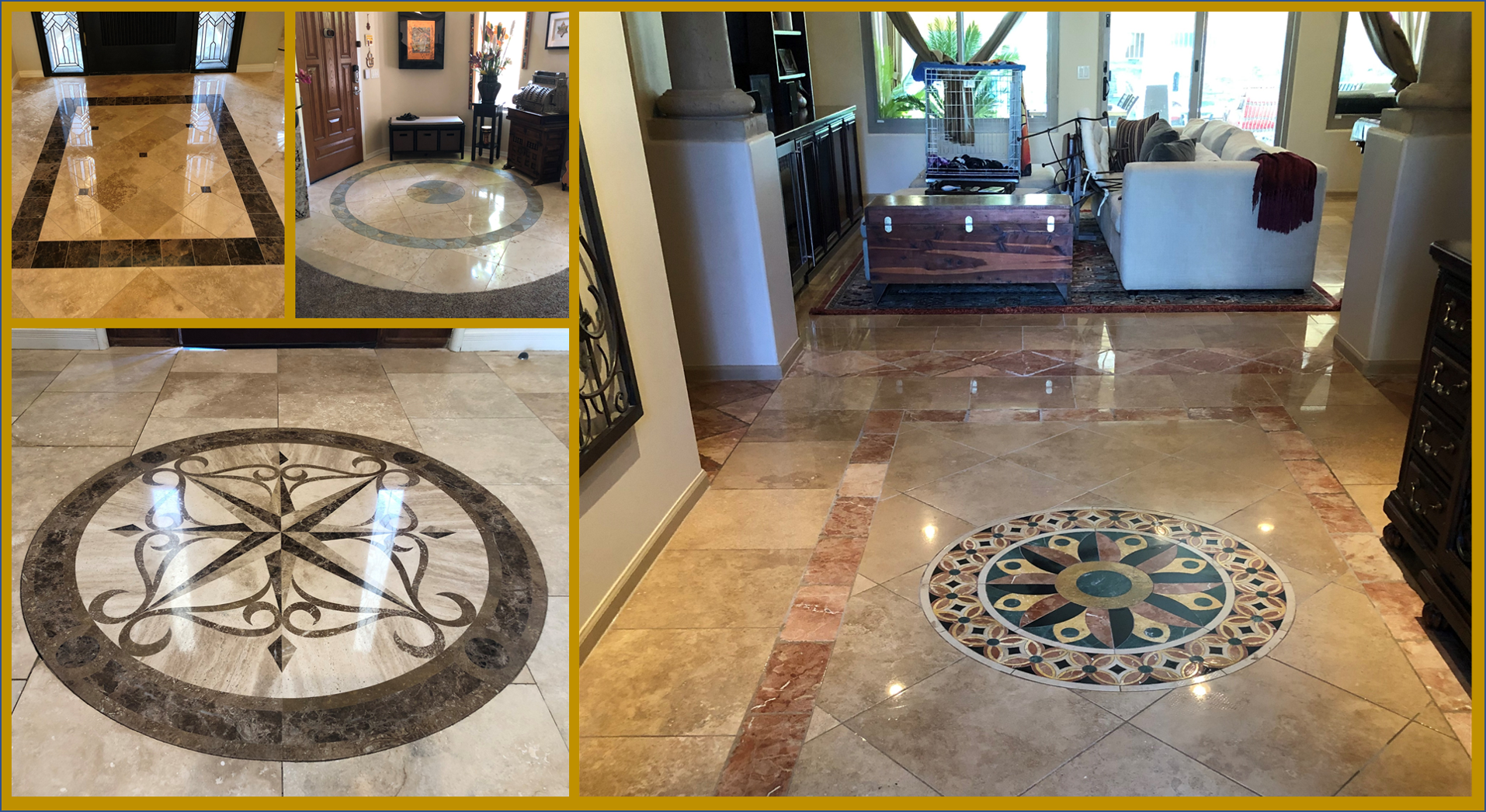Marble & Travertine Countertop Polishing and Refinishing
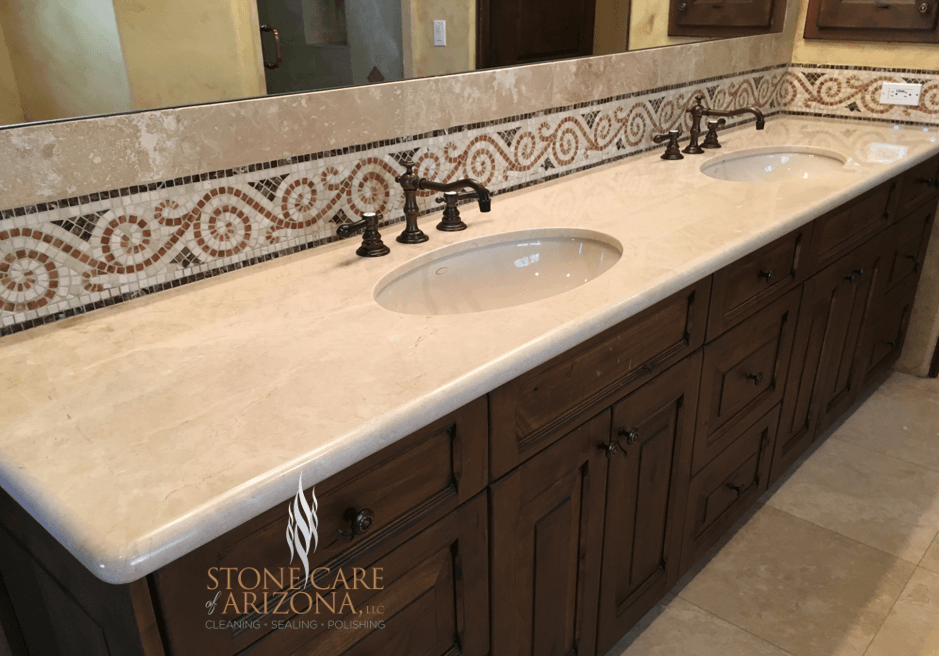
There is nothing like the unique veining and coloration of a Marble countertop. Marble countertops look amazing when they are unblemished from etching (water spots) and staining. Sadly, homeowners discover that Marble, Limestone, Oynx, and Travertine countertops are subject to surface damage. The surface damage is not limited to etching (water spots) and surface abrasions. Stone Care of Arizona, the Arizona stone care expert pinned an article about what substances will etch countertops. The article is located in our consumer information section. The title is "How to Remove water spots on Marble, Travertine & Limestone countertops."
Stone Care of Arizona, the Arizona Stone care expert would like to share some valuable information about Marble, Limestone, and Travertine countertops. Many homeowners are surprised to discover that Marble & Travertine countertops come from Limestone. All three countertops are installed with various finishes. The most common are polished (satin to high polished), leathered and honed. No matter the type of countertop you may have installed in your home they all need periodic cleaning and sealing. Although Marble and Travertine, come from Limestone there are fine details you may not be aware of.
Please consider the following:
Marble is a metaphoric intrusive (inside a dormant volcano) natural stone and Travertine is sedimentary extrusive (outside a dormant volcano) natural stone. Since Limestone, Marble, and Travertine share similar positive characteristics, they indeed share positive benefits of enhancing the decor’ of any home or business. The universal downside is the negatives. Limestone, Marble, Oynx, and Travertine countertops are acid sensitive and are prone to micro to deep scratches.
The pictures below are two examples we share for your consideration. The image on the left is a Marble countertop with a deep scratch and the image on the right is a Limestone countertop with a large etch from an acidic fluid.
Since the positives characteristics turn into frustration for homeowners they are often compelled to seek professional help. The online options and remedies can become perplexing leading to uncertainty as to what to do. There are new technologies that make removing an etch or scratch and it revolves around the same removal method. How?
let's break this down to unravel any misconceptions and uncertainty. In the pictures, we provide two different conditions on two different countertops with 2 concerned homeowners and we might add here "worried and concerned" homeowners frantically seeking our help. If you are reading this we want you to know it fixable.
We will need a baseline understanding of the marble and Limestone restoration process to address both issues.
Scenario 1:
SURFACE ETCH AND SCRATCH
Surface etches (water spots) and micro-scratches can be removed with light honing. The goal of light honing is to remove the surface etching and scratches to "preserve" the existing appearance. This would the better option and cost-efficient for you since it takes less time. How can you identify if your countertop is a candidate with a surface etch or scratch? Take your fingers and rub the surface. If you can detect a surface eruption or etching it may be a "surface etch or scratch."
HOW DOES STONE CARE OF ARIZONA REMOVE A SURFACE ETCH OR SCRATCH?
Marble, Limestone, Oynx, and Travertine etch and scratch removal revolves around Stone Care of Arizona using "diamond dipped" restoration pads e.g 120, 200, 400, and 800 diamond pads. These pads are for light-duty restoration of Marble, Limestone, Travertine, and Oynx, countertop the softer natural stones. Sadly, the images above don't qualify for this method of removal since the etching and scratches are deep.
Scenario 2:
SUBLEVEL ETCH AND SCRATCH
When an etch of scratch has breached the Bilby Layer (finish) it becomes a sublevel it's easier to identify. You can "feel the damage" with your fingers and fingernail. It's deep! YIKES! Again, Stone Care of Arizona, The Arizona stone care expert can help.
Consider the following points:
- The cause of sublevel etching is not limited to acidic beverages, citrus fruit, and acidic based cleaners. The way a sublevel etch happens is dependant on how long the acidic liquid has dwelled on the countertop and pH. The longer it dwells on the countertop the deeper the substance dissolves of the bilby layer (finish). Lastly, sublevel etching can happen based on the pH of the acidic liquid's pH (0-7). For example, vinegar is around 2.5 on the pH scale and wine ranges from 3.3 (white) to 3.4 (red). Both substances will leave an edge.
- The sublevel scratch is caused by abrasion damage from objects or pots and pans. The force of dragging and weight of the object can create a sublevel deep surface scratch on softer natural stones such as Marble, Limestone, Oynx, and Travertine.
HOW DOES STONE CARE OF ARIZONA REMOVE A SUBLEVEL ETCH OR SCRATCH
Marble, Limestone, Oynx, and Travertine etch and scratch removal revolves around Stone Care of Arizona using "resin diamonds." The resin diamond pads are for full Marble and Limestone restoration. The resin pads plunge deeper with the goal of getting below the etch or scratch. In the picture on the left, the Marble requires 120, 400, 800, 1500, 3000, 8000 to match the existing finish. We use our experience and level of craftsmanship to meet and exceed our client's expectations. Below is the client reactions
If you are unhappy with the appearance of your countertop, please give Stone Care of Arizona a call at 480-625-0557. It will be our distinct pleasure is helping up
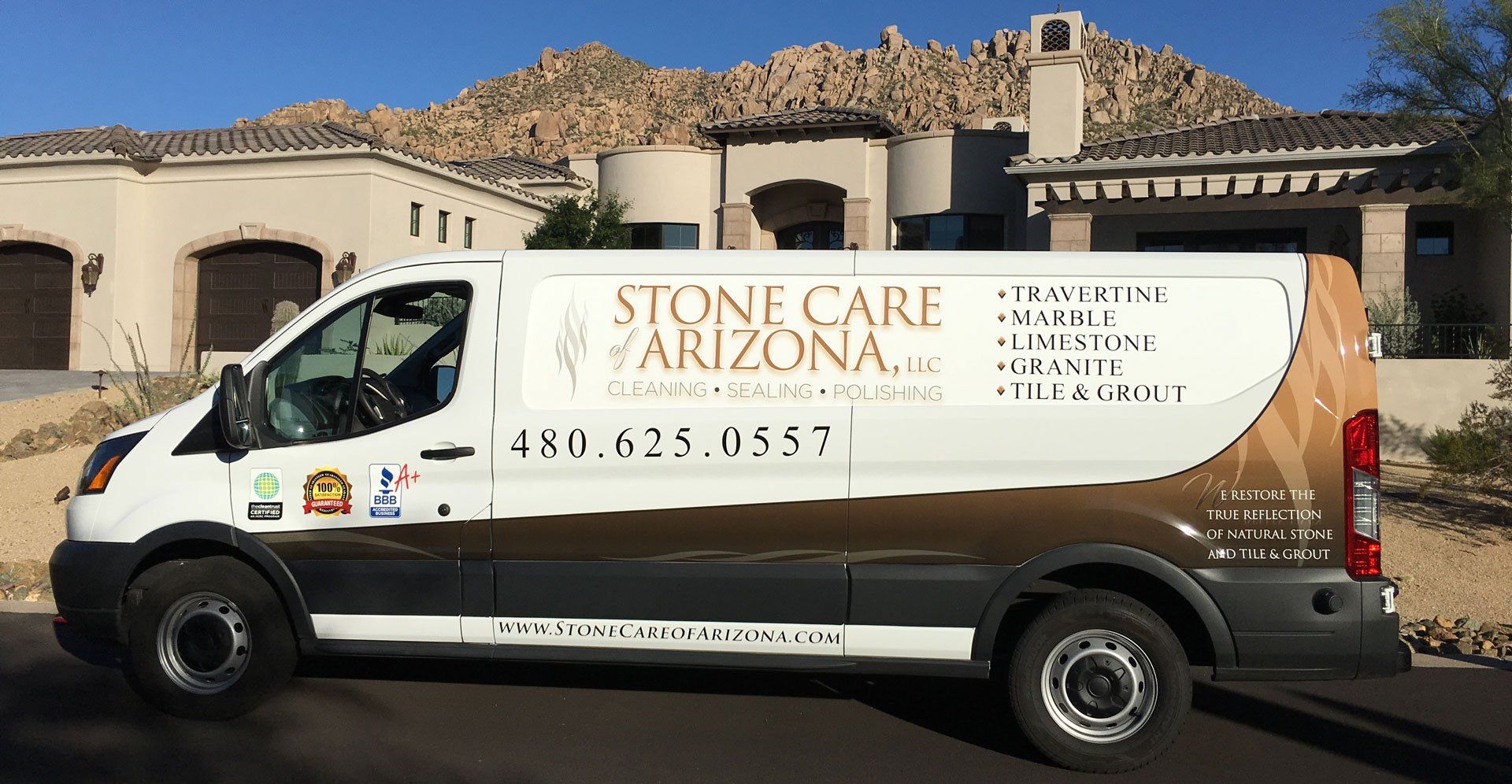
Stone Care of Arizona, the natural stone care expert is the premier cleaning, polishing, sealing, and floor refinishing company in the North Valley. We specialize in making you happy! Stone Care of Arizona will provide cleaning, sealing, and floor refinishing services that meet and/or exceed your expectations. We provide a make you smile guarantee to ensure that you are thrilled with our work. If you desire a wonderful experience, please give us a call at 480-625-0557. We look forward to speaking with you.
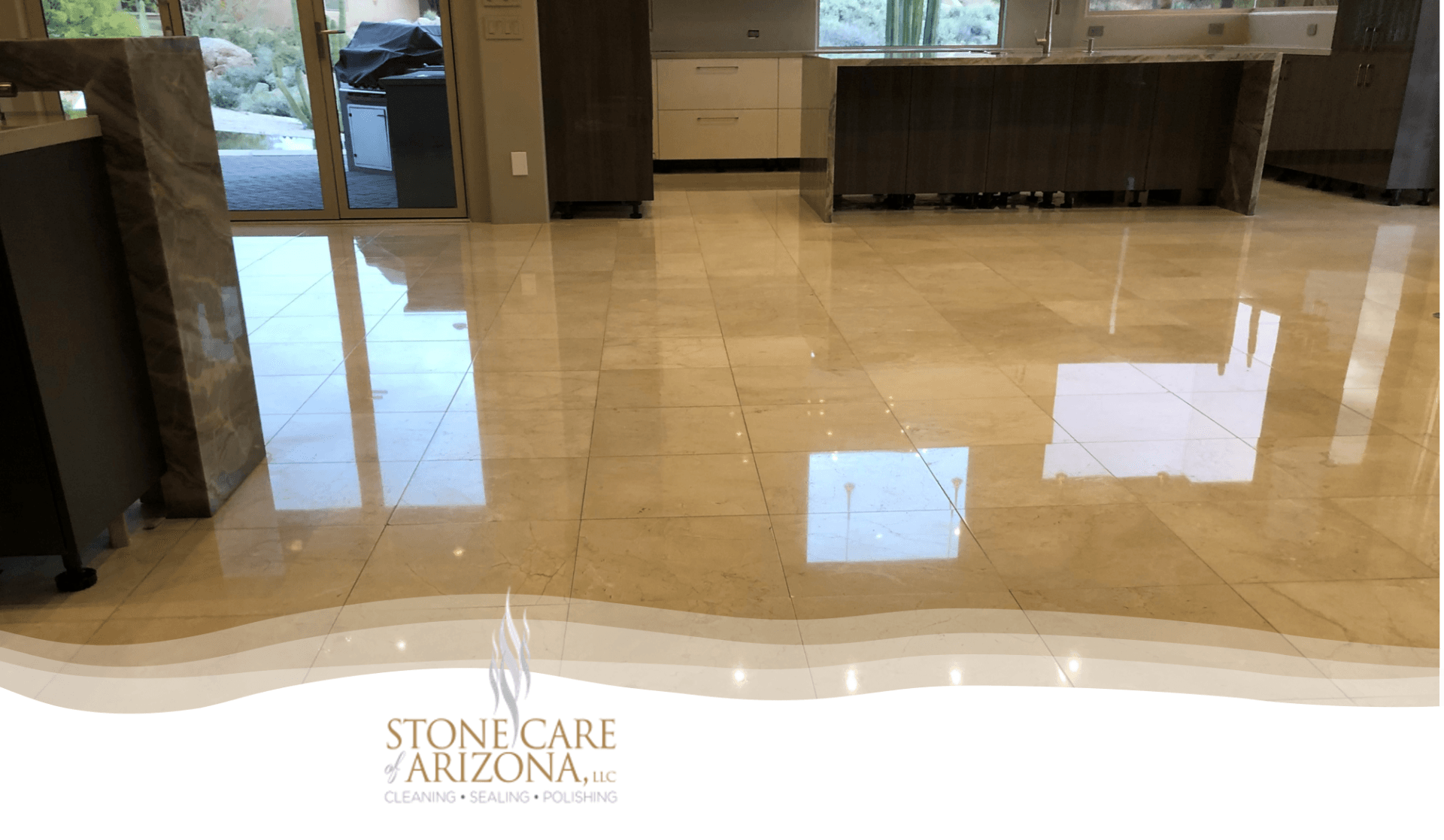
Stone Care of Arizona, Arizona stone care expert is the premier natural stone care cleaning, sealing, and polishing company. Stone Care of Arizona specializes in Marble floor cleaning and sealing services. We also do Travertine floor cleaning and sealing Limestone floor cleaning and sealing services in Scottsdale, Paradise Valley, Fountain Hills, and Cave Creek areas.
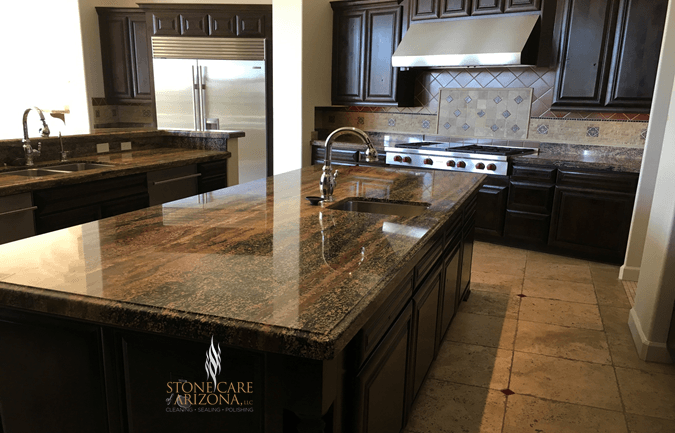
Stone Care of Arizona, the Arizona stone care expert recommends that "all" Granite countertops should be sealed. Granite cleaning and COVID-19 disinfecting and sealing is necessary to ensure that you Granite countertop safe to enjoy. If you desire Granite cleaning and sealing, give Stone Care of Arizona, the Arizona stone care expert a call at 480-625-0557. We look forward to speaking to you about cleaning and sealing your Granite countertop.
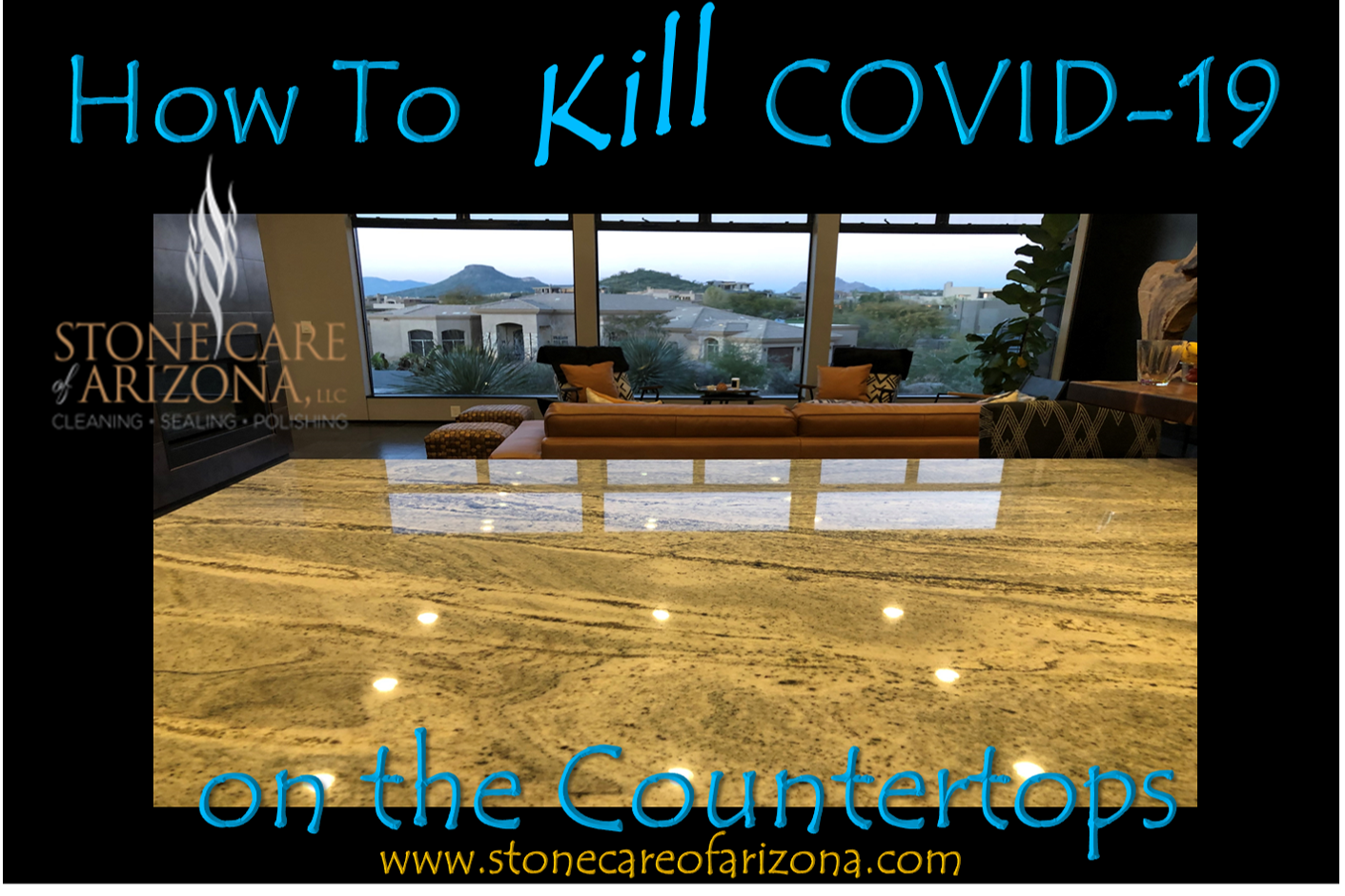
Stone Care of Arizona, the natural stone care expert takes cleaning Granite countertops, Marble countertops, cleaning Travertine countertops, and Limestone countertops seriously. COVID-19 is taking no prisoners and making sure your countertops are disinfected after cleaning is very important. If you are serious about countertop cleaning, disinfecting and sealing, please give Stone Care of Arizona a call at 480-625-0557

Stone Care of Arizona, the natural stone care expert receives lots of calls from concerned clients who have discovered to their chagrin, they have damaged their Marble, Travertine, Onyx and Limestone floors, countertops and showers due to mild to severe etching. Stone Care of Arizona, the natural stone expert provide the flooring services,
FLOORS:
• Travertine cleaning, sealing and floor refinishing services
• Marble cleaning, sealing and floor refinishing services
• Onyx cleaning, sealing and floor refinishing services
• Limestone cleaning, sealing and floor refinishing services
• Slate cleaning and sealing
• Slate cleaning and refinishing services
• Flagstone cleaning & sealing services
• Terrazzo cleaning & sealing and refinishing services.
• Terrazzo cleaning & sealing services.
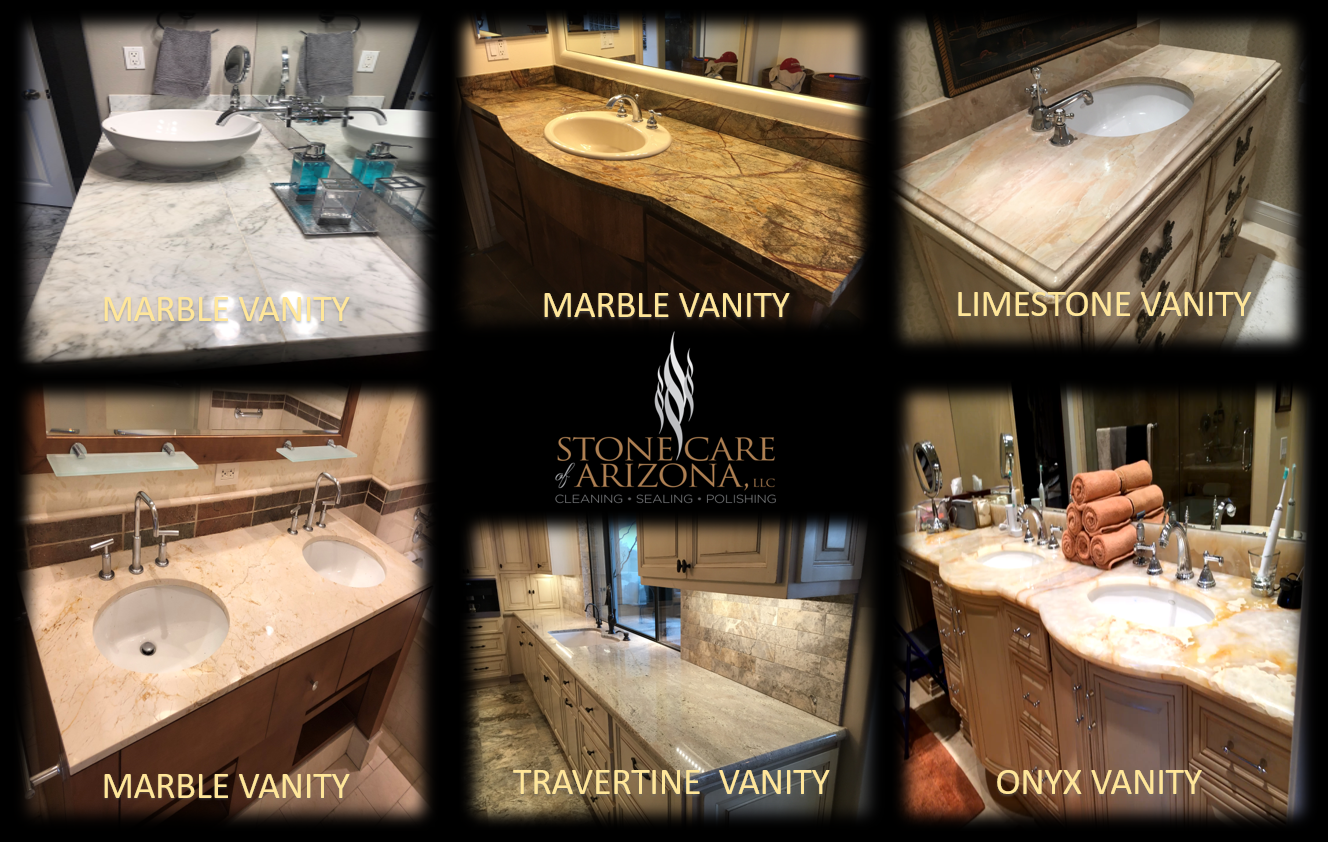
Stone Care of Arizona is the Arizona cleaning and sealing experts! We specialize in the following services, Travertine countertop cleaning, sealing and refinishing, Marble countertop cleaning, sealing and refinishing, Onyx countertop cleaning, sealing and refinishing, Limestone countertop cleaning, sealing and refinishing, Granite countertop cleaning, sealing and refinishing services Give Stone Care of Arizona, Arizona stone care expert a call at 480-625-0557. It will be our distinct pleasure in providing you with world-class services.
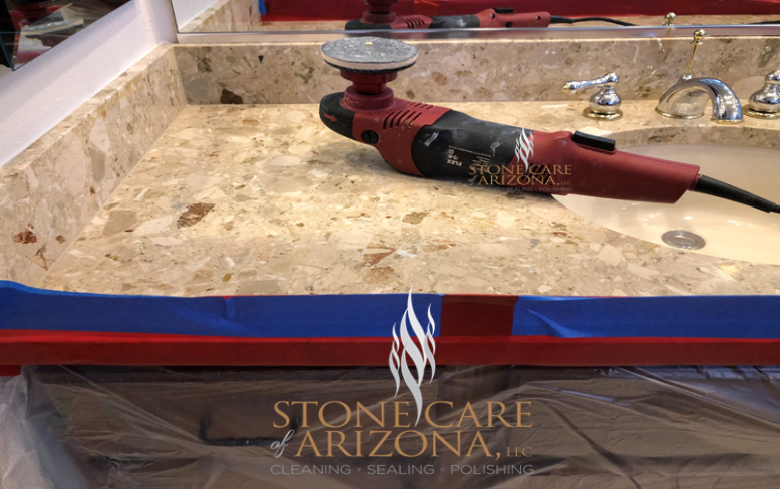
Stone Care of Arizona is the Arizona stone care Cleaning and Sealing Expert. Stoner Care of Arizona Specializes in Marble, Travertine, Onyx, and Limestone Refinishing Services. Stone Care of Arizona can clean and seal Marble countertops, clean and seal Travertine countertops , clean and seal Limestone countertops. If you have water spots and etching that needs to be removed, give Stoner Care Of Arizona at 480-625-0557.


